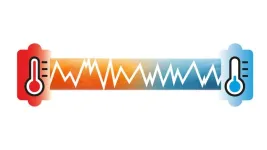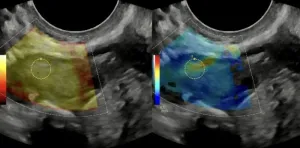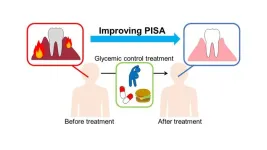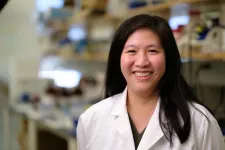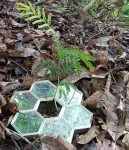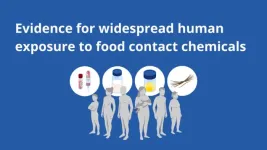(Press-News.org) Thanks to nanoscale devices as small as human cells, researchers can create groundbreaking material properties, leading to smaller, faster, and more energy-efficient electronics. However, to fully unlock the potential of nanotechnology, addressing noise is crucial. A research team at Chalmers University of Technology, in Sweden, has taken a significant step toward unraveling fundamental constraints on noise, paving the way for future nanoelectronics.
Nanotechnology is rapidly advancing, capturing widespread interest across industries such as communications and energy production. At the nano level – equivalent to a millionth of a millimeter – particles adhere to quantum mechanical laws. By harnessing these properties, materials can be engineered to exhibit enhanced conductivity, magnetism, and energy efficiency.
“Today, we witness the tangible impact of nanotechnology – nanoscale devices are ingredients to faster technologies and nanostructures make materials for power production more efficient,” says Janine Splettstösser, Professor of Applied Quantum Physics at Chalmers.
Devices smaller than the human cell unlocking novel electronic and thermoelectric properties
To manipulate charge and energy currents down to the single-electron level, researchers use so-called nanoscale devices, systems smaller than human cells. These nanoelectronic systems can act as “tiny engines” performing specific tasks, leveraging quantum mechanical properties.
“At the nanoscale, devices can have entirely new and desirable properties. These devices, which are a hundred to ten thousand times smaller than a human cell, allow to design highly efficient energy conversion processes,” says Ludovico Tesser, PhD student in Applied Quantum Physics at Chalmers University of Technology.
Navigating nano-noise: a crucial challenge
However, noise poses a significant hurdle in advancing this nanotechnology research. This disruptive noise is created by electrical charge fluctuations and thermal effects within devices, hindering precise and reliable performance. Despite extensive efforts, researchers have yet to find out to which extent this noise can be eliminated without hindering energy conversion, and our understanding of its mechanisms remains limited. But now a research team at Chalmers has succeeded in taking an important step in the right direction.
In their recent study, published as editor’s suggestion in Physical Review Letters, they investigated thermoelectric heat engines at the nanoscale. These specialised devices are designed to control and convert waste heat into electrical power.
“All electronics emit heat and recently there has been a lot of effort to understand how, at the nano-level, this heat can be converted to useful energy. Tiny thermoelectric heat engines take advantage of quantum mechanical properties and nonthermal effects and, like tiny power plants, can convert the heat into electrical power rather than letting it go to waste,” says Professor Splettstösser.
Balancing noise and power in nanoscale heat engines
However, nanoscale thermoelectric heat engines work better when subject to significant temperature differences. These temperature variations make the already challenging noise researchers are facing even trickier to study and understand. But now, the Chalmers researchers have managed to shed light on a critical trade-off between noise and power in thermoelectric heat engines.
“We can prove that there is a fundamental constraint to the noise directly affecting the performance of the ‘engine’. For example, we can not only see that if you want the device to produce a lot of power, you need to tolerate higher noise levels, but also the exact amount of noise. It clarifies a trade-off relation, that is how much noise one must endure to extract a specific amount of power from these nanoscale engines. We hope that these findings can serve as a guideline in the area going forward to design nanoscale thermoelectric devices with high precision,” says Ludovico Tesser.
More about the research:
The study “Out-of-Equilibrium Fluctuation-Dissipation Bounds” was published in Physical Review Letters.
At the time of the study, all researchers were active at Chalmers University of Technology.
The research project has been funded by the European Research Council (ERC) under the European Union’s Horizon Europe research and innovation programme, as well as by a Wallenberg Academy Fellowship.
For more information, contact:
Janine Splettstösser, Professor at Applied Quantum Physics at the Department of Microtechnology and Nanoscience at Chalmers University of Technology, janines@chalmers.se +46 31 772 31 11
Ludovico Tesser, PhD student in Applied Quantum Physics at the Department of Microtechnology and Nanoscience at Chalmers University of Technology, tesser@chalmers.se
Ludovico Tesser speaks English and Italian and Janine Splettstösser speaks English and German and they may be available for live and pre-recorded interviews. At Chalmers, we have podcasting studios and film equipment on site and can assist requests for TV, radio, or podcast interviews.
Image caption: The image illustrates a tiny nanoscale heat engine connecting hot and cold sides. The temperature difference drives a current, generating power, but both current and power are noisy hindering precise and reliable performance. The Chalmers researchers have managed to demonstrate a trade-off relation between noise and power from these nanoscale engines, paving the way for future nanoscale thermoelectric devices with high precision.
Image credit: Chalmers University of Technology | Carina Schultz
END
New understanding of the limits on nano-noise
2024-09-17
ELSE PRESS RELEASES FROM THIS DATE:
Graphite oxidation experiments reveal new type of oscillating chemical reaction
2024-09-17
A reaction that puzzled scientists for 50 years has now been explained by researchers at Umeå University. Rapid structural snapshots captured how graphite transforms into graphite oxide during electrochemical oxidation, revealing intermediate structures that appear and disappear over time. The researchers describe this as a new type of oscillating reaction.
Oscillating chemical reactions are fascinating to watch and important for developing an understanding of how complex systems work, both in chemistry and in nature. Classical visual examples of such reactions show how the colors of a solution change back and forth, cycling ...
How does a tiny shrimp find its way home in a vast ocean? Study finds it’s down to their cave’s special smell
2024-09-17
Homing is an animal’s ability to navigate towards an original location, such as a breeding spot or foraging territory. Salmon and racing pigeons are famous for homing, but similar behaviors occur in groups as diverse as bees, frogs, rats, and sea turtles. There, homing individuals are known or suspected to rely on landmarks, the Earth’s magnetic field, or the sky’s pattern of polarized light to find their way back.
Another group known to display homing are cave-dwelling mysid shrimp, also known as possum shrimp for the pouches in which females carry ...
‘Marine identity’ can help restore the ocean
2024-09-17
People’s deep connection with the ocean – their “marine identity” – can help us reset society’s relationship with the seas, new research led by Dr Pamela Buchan, from the University of Exeter, suggests.
A diverse, international group of marine researchers and practitioners met to discuss marine identity – based on testimony and photos from multiple countries.
The group included Diz Glithero of the Canadian Ocean Literacy Coalition, Dr Emma McKinley of Cardiff University who helped deliver the workshop, and others from across Europe, Africa, Indonesia, North America, and Australasia.
They found many common themes, including traditions ...
Evidence shows that estrogen blocker treatment does not increase the risk of coronary heart disease in breast cancer patients
2024-09-17
New evidence shows that extended estrogen suppression treatment using an aromatase inhibitors for hormone receptor-positive postmenopausal breast cancer is safe; it does not increase the risk of coronary artery calcification, a sign of active coronary atherosclerosis, as some prior studies had indicated. An article in the Canadian Journal of Cardiology, published by Elsevier, details the findings from a retrospective, cross-sectional observational study that investigated the association between the duration of aromatase inhibitor treatment and the severity of coronary artery calcification in postoperative breast cancer patients.
Coronary ...
Survey shows 25% of adults consider weight loss drug use without prescription
2024-09-17
COLUMBUS, Ohio – Injectable weight loss drugs are popular right now but can be hard to get because they are in short supply or too expensive without insurance. The result is that some people are skipping the doctor’s office and reaching out to potentially unreliable sources such as unlicensed online pharmacies or telehealth sites, which could expose patients to risks.
A new national survey from The Ohio State University Wexner Medical Center reveals 1 in 4 (25%) of 1,006 adults surveyed would consider using an injectable weight loss medication without consulting their doctor. The reasons ...
New treatment extends ovarian function in older mice
2024-09-17
Medication to reduce ovarian scarring helps extends overall health of reproductive system
Freezing eggs only addresses age-related infertility, not ovarian hormone loss. New treatment would ‘fix the root of the issue’
Findings also have implications for developing treatments for ovarian cancer
CHICAGO --- A woman’s ovaries are like a factory where eggs grow and produce hormones that regulate everything from menstruation and pregnancy to bone density and mood. As she and her factory age, production dwindles, and by the time she hits menopause ...
Getting to the root of the problem: Intensive diabetes treatment reduces gum disease inflammation
2024-09-17
Osaka, Japan – While the link between diabetes and periodontal disease is known, the impact of diabetes treatment on periodontal health is less well understood. Recent research published in Diabetes, Obesity and Metabolism demonstrates that periodontal inflammation can be positively affected just by receiving intensive diabetes treatment.
It is widely believed that there is an interrelationship between diabetes and periodontal disease. While it has been shown that treatment of periodontal disease improves blood ...
Researchers take power and efficiency of biological sensing to record level
2024-09-17
University of Arizona researchers have developed a new biological sensing method that can detect substances at the zeptomolar level – an astonishingly miniscule amount.
This level of sensing, immediately useful for drug testing and other research, has the potential to make new drug discoveries possible. Eventually, the advance could lead to portable sensors that can detect environmental toxins or chemical weapons, monitor food quality or screen for cancer.
A paper describing the results was published in the journal Nature Communications on Aug. 28.
Judith Su, associate professor of biomedical engineering and optical ...
Under-plant mirrors improve endangered plant survival and growth
2024-09-17
The most endangered plant species in the Mariana Islands, the legume tree Serianthes nelsonii, faces persistent threats in its recovery. These have been identified as a short lifespan of habitat seedlings and rapid death of saplings transplanted from conservation nurseries.
The Plant Physiology Laboratory at the University of Guam addressed this conundrum by improving growth and survival of Serianthes seedlings through strategically placed mirrors beneath deeply shaded seedlings to increase available ambient light. The resulting paper has been published ...
Widespread evidence for packaging-related chemicals in humans
2024-09-17
About this study: A new review is the first to reveal the extent of human exposure to food contact chemicals (FCC), with 3,601 chemicals used in food packaging and other food contact articles having been found in human bodies. The authors say this review also highlights significant gaps in biomonitoring and toxicity data.
---
In a new study, published in the Journal of Exposure Science and Environmental Epidemiology, scientists describe the widespread human exposure to food contact chemicals (FCCs). The research reveals which chemicals ...
